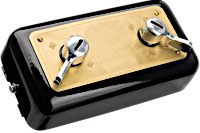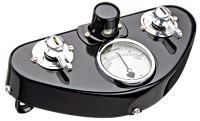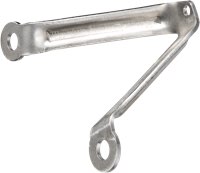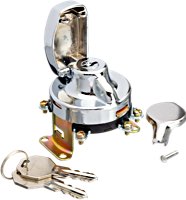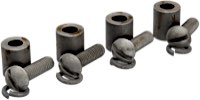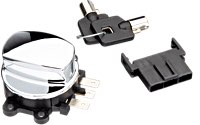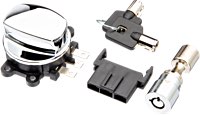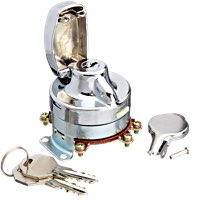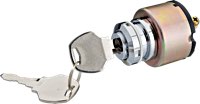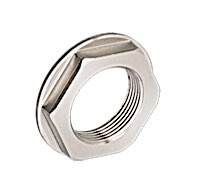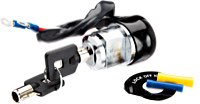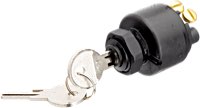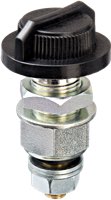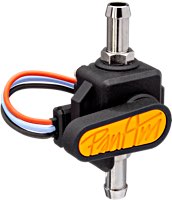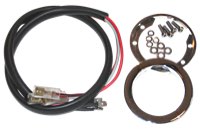Ignition Switches
What is an ignition switch?
An ignition switch can only be operated with the appropriate key. The ignition switch on motorcycles, if they have one, is simply the central switch that disconnects the battery from the rest of the circuit so it doesn't discharge. Also, with an ignition switch, you can usually switch multiple circuits with one component. In contrast, the classic 1924-1936 Harley model switch boards, as the precursor to the ignition lock, have separate switches, one for the battery and a separate one for the lights.
Does my Harley-Davidson have to have an ignition switch?
The ignition switch is not considered a theft protection, at least in Germany. This protection is prescribed in the German StVZO according to §38a (2): "Motorcycles (...) must be equipped with a security device against unauthorized use, (...)". - You will not find a regulation for an ignition switch. That's why the TÜV also checks if the steering lock works or if there is a lock at all. On many older Harleys without a steering lock, the separate padlock is even registered in the documents. In Austria an ignition lock is sufficient as theft protection.
So no, your favorite motorcycle does not need an ignition switch, at least not in Germany. But it makes sense anyway. The ignition switch is the central switch that separates the battery from the rest of the electrical system. You could also do it like the motorcyclists did in Kaiser Wilhelm's time: Disconnect the negative or positive wire from the battery. But no one really wants to fiddle with that, unless you are riding a motorcycle like that. So: such an ignition switch is simply practical. As an alternative, however, there is always the Kill Bill battery switch from Bates. If you don't want to mount a clunky Nato switch onto your bike: the Kill Bill is the cool alternative.
By the way, Harley-Davidson motorcycles didn't have ignition switches in the modern sense until 1936. From 1915, the J models, those with alternators, had simple switches for the ignition current. From 1926, they had consoles with two switches, one for ignition current and one for lights. But we would not call them "locks" now. The "keys" used can be replaced with strips of sheet metal, screwdriver blades, etc.
How does an ignition switch work?
An ignition lock has three parts: a housing, the lock cylinder and the switch. The housing determines whether the ignition lock fits on the triple clamp, on the tank, under the tank, or on the Bates universal mount.
The lock cylinder is the part that can be turned with the appropriate key. It prevents malicious or careless people from operating the switch.
Finally, the (rotary) switch connects - usually in several stages - different electrical contacts to each other. The switch mechanism is spring-loaded. On the back of the ignition lock are the contacts with their designations.
I have an ignition switch without designations on the terminals. How do I know how to connect it?
If you want to find out at which position of the ignition lock which contacts or wires are connected, you just need a multimeter. At the Ohm (Ω) position, test the connections in pairs. Write down or paint on the measurement results and save or file them.
Can an ignition lock break?
Unfortunately yes. Ignition switches are wearing parts. The springs and other parts of the mechanism can wear out or even break. Then the contacts no longer close. The reason are wear and/or vibrations, which are transmitted to the inner workings. Even those who constantly have the whole bunch of keys hanging on the ignition key run the risk that their ignition lock will eventually stop working. Put a cool key fob on it so you can find your key in your pocket. But it's best to leave all other keys out. And feel free to maintain the lock cylinder with WD-40 or dry lubricant. It will thank you with a longer life.

Have any questions?
Our service team will be glad to help out: Mondays - Thursdays 08:00-17:00 CET, Fridays 08:00-16:00 CET, Phone: +49 / 931 250 61 16, eMail: service@wwag.com
